Advances in Decorative PVD Chromium Coatings for Polymer Substrates
This article reviews a two-layer, selective coating process which incorporates a specially developed UV-cured paint base coating with a sub-micron thick PVD chromium top coating. It illustrates the coating’s testing protocols of automotive manufacturers and the necessities of controlling the stresses within the coating matrix.
Editor’s Note: The following is a synopsis of a presentation given at NASF SUR/FIN 2018, in Cleveland, Ohio on June 4, 2018 in Session 6, Advances in Surface Finishing Technology II - New Trends in Surface Finishing. This brief can be accessed and printed HERE; the complete Powerpoint presentation is available by clicking HERE.
ABSTRACT: Much effort has been invested over the last ten years to produce an environmentally-safe alternative to decorative Cr+6 electroplating of polymer substrates. Cr+3 is one alternative, but lacks the full wear and color attributes of Cr+6 that surface engineers and designers desire. This article reviews a two-layer, selective coating process which incorporates a specially developed UV-cured paint base coating with a sub-micron thick PVD chromium top coating. It illustrates the coating’s testing protocols of automotive manufacturers and the necessities of controlling the stresses within the coating matrix.
|
|
|
|
Introduction
Physical vapor deposition (PVD) describes high-energy vacuum deposition methods used to deposit thin metal and ceramic films by the condensation of the vaporized desired film material (e.g., aluminum, chromium) onto the substrate surfaces (e.g., automotive plastic parts). These methods include thermal, sputter and cathodic arc deposition. The focus here is on sputter deposition.
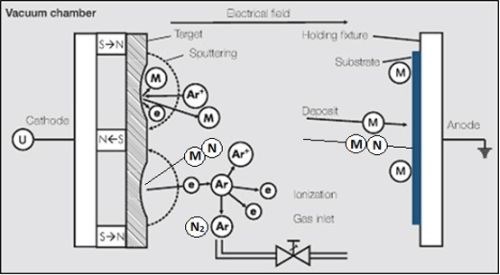
Figure 1 - Reactive sputter deposition.
As shown in Fig. 1, a high magnetic field near the target surface strips the outer valence electrons from argon (Ar) molecules, generating positively charged argon ions. The argon ions are accelerated towards and bombard the highly negatively biased target surface, “sputtering” out positively-charged metal ions. The metal ions travel across the vacuum space and condense on the substrate surface, giving up their energies and becoming a highly adherent thin film coating. The electrons generated in the process make the electrical return path to the positive anode(s). Reactive gases, such as nitrogen (N2) react with the metal ion, becoming compounds, such as chromium nitride (CrN).
PVD chromium development
PVD industry has been working on processes to gain an entrance into the decorative chromium market for decades, but the processes of the day suffered from cracking. Significant work was performed by John Thornton, et al. in the 1970s, applying sputtered chromium to ABS, with and without a paint base coating, and without a top coating.
Today, resins and as-molded surfaces have greatly improved and can be directly PVD coated. Applications requiring high levels of durability need paint base coatings for structural support of the PVD film and top coatings for abrasion resistance of soft PVD films. Protected applications (behind a lens) can be directly PVD coated and require no paint base or top coatings. For many years, reactive PVD coatings have been used over electroplated coatings on hardware and plumbing components. Patented PVD solutions have received OEM approvals.
Advantages of PVD processing
There are numerous advantages to PVD chromium processing. It is REACH-conforming and environmentally friendly, avoiding any use of hexavalent chromium and nickel plating chemistries. A broad spectrum of color shades and effects from bright to dark chromium and colors are possible. Corrosion resistance applies to automotive test requirements in combination with or without top coat. Because the PVD film is much thinner than electrodeposited chromium (and therefore lighter in weight), the deposit, coupled with the use of flexible substrates enables safety-relevant applications, e.g., impact protection airbag emblems and others. Cost reduction can be realized as well.
For automotive applications, a large variety of substrate materials are amenable to PVD, and a wide variety of metal coatings, including many that cannot be readily electrodeposited (e.g., aluminum, titanium, stainless steel), are available. Using laser etching and 3D-printed selective masking or light transparency properties (i.e.., coatings ~20 nm in thickness), internally lit day/night designs for interior instrumentation can be used. Because the thin PVD coatings are laser transparent, crash avoidance and lane monitoring systems are not blocked.
PVD chromium can be applied to a wide variety of applications, including automotive, motorcycle and RV trim components, steel wheels and wheel covers, appliance trim components, plumbing and sanitary components, commercial, and residential lighting trim components and electronic packaging.
Coating system advances
Figure 2 compares the layer arrangements from regular chromium plating, the traditional PVD triple stack base coat + PVD + top coat, and an advanced PVD chromium system which eliminates the top coat. Conventional chromium plating involves electrodeposited multilayers of copper, nickel and chromium, with the nickel consisting of single or multiple layers of varying composition and structure, depending on the level of corrosion service required.
Traditional PVD involves a metallized layer sandwich between a UV/thermal base coat on the substrate and a UV/thermal top coat. Here, chromium is one of several metals of choice depending on the finish color desired. The limitation here is that the top coat will darken the metal color, losing depth.
The latest PVD technology involves a two-layer proprietary PVD chromium over a base coat, with the top coat eliminated†. Here, the true deep chromium color is preserved, as with GM Specification 150. It can be applied to different plastics, metals and glass, and several UV-cured base coats have been tested and approved. There is minimal corrosion risk, with excellent adhesion, thermal stability and humidity resistance. In processing, strict attention is necessary to control stress throughout the PVD matrix.

Figure 2 - Comparison of chromium plating with traditional and advanced PVD systems.
UV-cured base Coating
The UV base coating is as important to the performance of the PVD chromium as is the chromium layers itself. The UV base coat (monocure), contains a low level of volatile organic compounds (VOCs), involves short process times, and cures in seconds (Fig. 3). The formulation of the basecoat must optimize adhesion to the substrate and its support of the PVD chromium. Known paint issues must be considered, including adhesion for multiple substrate part design, paint rheology and application methods. Optimal smoothness is required since the reflective surface exacerbates any flaws (orange peel, dust inclusion, etc.).
UV-cured painting sees a low level of heat (<80°C) from flash heat to optimize paint flow-out prior to UV curing. Matching the type and set up of the lamps (arc, microwave, LED; stationary mounted or robot mounted) and the energy required for curing, must take into account the heat sensitivity of the substrate.
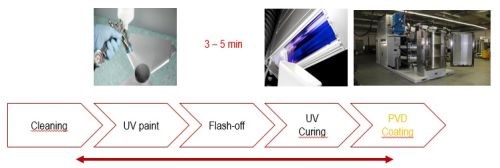
Figure 3 - UV-cured base coat process.
PVD chromium performance
The PVD chromium meets virtually all major test requirements for automotive interior and exterior trim components (Audi-Volkswagen, BMW, Renault, PSA, Ford, Porsche, Daimler), using the proprietary system. As well, those specifications for home and commercial appliances (Bosch, Miele) are met with PVD chromium and a standard UV base coat (See Appendix).
Industrial scale production
Figure 4 illustrates the available industrial scale processing, from molding, through cleaning, to UV coating and PVD chromium. With single point loading and a cycle time of 15 minutes, the productivity of the system is quite favorable.

Figure 4 - PVD chromium in industrial production.
Summing up
In summary, PVD chromium is gaining rapid acceptance with OEMs for the safe replacement of automotive trim, sanitary and appliance applications of electroplated chromium on plastic substrates. The key work for chromium coatings on plastic substrates with no top coating was started four decades ago, and batch and inline processing is now available.
Job coating services available at SPPP, Saint-Berthevin, France (http://www.sppp53.com).
Application coatings are available at VTI® in the USA (www.vergason.com)
APPENDIX
Performance Test Results for PVD Chromium
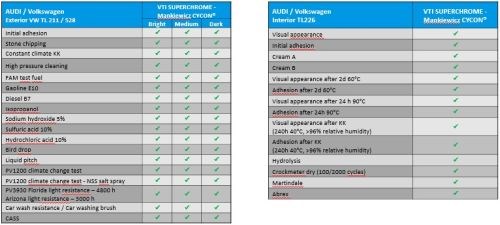
Figure A1 - Audi-Volkswagen (Exterior and Interior).

Figure A2- BMW (Exterior and Interior).
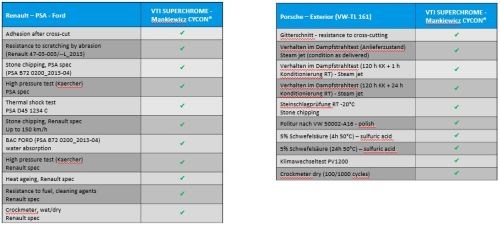
Figure A3 - Renault-PSA (Peugeot, Citroen, DS, Opel and Vauxhall)-Ford and Porsche (Exterior).

Figure A4 - Bosch Directive LV 74A (Appliances).
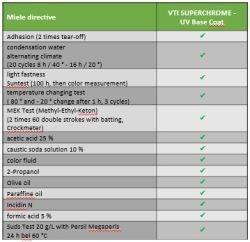
Figure A5 - Miele Directive (Commercial Washers).
About the author

Gary Vergason has been working in the PVD field for over 37 years in the field of vacuum coatings, beginning with Multi-Arc Vacuum Systems in St. Paul, Minnesota and Perkin-Elmer Corporation in Eden Prairie, Minnesota before founding Vergason Technology in Van Etten, NY in 1986, where he is currently its CEO and Chairman. His areas of expertise include physical vapor deposition, chemical vapor deposition and plasma-enhanced chemical vapor Deposition. He has authored and co-authored numerous patents, technical papers and articles. Mr. Vergason has served as President of the Society of Vacuum Coaters since May 2016.
*Compiled by Dr. James H. Lindsay, NASF Technical Editor
** Corresponding presenter:
Gary Vergason
Vergason Technology, Inc.
166 State Route 224
Van Etten, New York 14889
Phone: (607) 589-4429
Mobile: (607) 351-3819
Email: gvergason@vergason.com
Website: www.vergason.com
† VTI Superchrome®, Vergason Technology, Inc., Van Etten, NY, USA over Mankiewicz CYCON®, Mankiewicz Gebr. & Co. (GmbH & Co. KG), Hamburg, Germany.
Related Content
Understanding Robotic Vacuum Impregnation
Robotic vacuum impregnation can be used to seal porosity, minimize scrap, increase throughput and reduce costs.
Read MoreTop Shop Emphasizes Dedication, Work Ethic
With a primary focus on aerospace and defense work, American Metaseal Corp. of Arbutus, Maryland, has qualified as a Top Shop on multiple occasions.
Read MoreReplacing Open-Top Vapor Degreasing in Aerospace Manufacturing
Options and considerations for cleaning aerospace parts as regulations tighten on vapor degreasing solvents.
Read MoreReplacing Discontinued Vapor Degreasing Fluids – 3 Things to Consider
What do you do when you learn your trusted line of vapor degreasing cleaning fluids will soon be discontinued? Elizabeth Norwood of MicroCare discusses what you should keep in mind when replacing discontinued vapor degreasing fluids.
Read MoreRead Next
Education Bringing Cleaning to Machining
Debuting new speakers and cleaning technology content during this half-day workshop co-located with IMTS 2024.
Read MoreDelivering Increased Benefits to Greenhouse Films
Baystar's Borstar technology is helping customers deliver better, more reliable production methods to greenhouse agriculture.
Read MoreA ‘Clean’ Agenda Offers Unique Presentations in Chicago
The 2024 Parts Cleaning Conference, co-located with the International Manufacturing Technology Show, includes presentations by several speakers who are new to the conference and topics that have not been covered in past editions of this event.
Read More





















